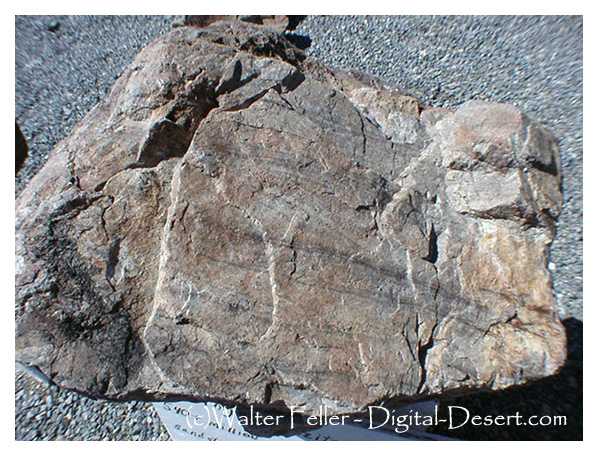|
|
Geology:
Walk Through Time
Stirling Quartzite

< Previous - Next >
2,000 foot thick, 540+ million years old. Crossbedded
sandstone
was formed in a near-shore environment and then partially
metamorphosed
into impure
quartzite.
Phanerzoic eon > Paleozoic era > Cambrian period > Series 1 epoch > Stage 1 age
|
Stirling Quartzite Death Valley Region
The Stirling Quartzite is an important geological formation in the Death Valley region of California. It is notable for its distinct lithological characteristics and its relevance in the study of the area's Precambrian and early Paleozoic geological history.
Characteristics and Composition
The Stirling Quartzite is primarily composed of:
Quartzite: A hard, metamorphic rock which is essentially compacted and cemented quartz-rich sandstone. Quartzite from this formation is typically very pure and resistant to weathering and erosion.
Geological Significance
Age: The Stirling Quartzite dates back to the Late Proterozoic, around 600 to 800 million years ago. This time period is significant as it marks the transition towards more complex life forms leading up to the Cambrian period.
Paleoenvironment: The formation's quartzite suggests deposition in a high-energy beach or shallow marine environment where sands were cemented into quartzite due to deep burial and/or mild metamorphism.
Tectonic Activity: The Stirling Quartzite has also been influenced by regional tectonic activity, including folding and faulting, which has affected its current distribution and exposure in Death Valley.
Research and Relevance
The Stirling Quartzite is studied for its excellent preservation of sedimentary structures, which can provide insights into ancient depositional environments. Its durability and resistance to weathering make it an excellent record keeper of the conditions that existed at the time of its formation. The formation is also significant for understanding the geological transitions that occurred at the end of the Proterozoic and the beginning of the Paleozoic era, particularly in terms of changes in sea levels, climates, and biological activity.
|

